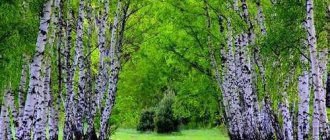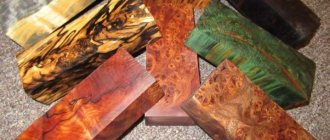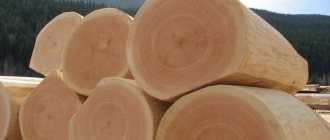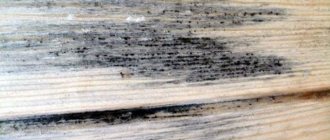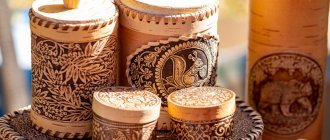In Dahl's dictionary
and. Betula tree, white species, V. alba, Kamch. fresh, or rather fresh, from the old. Breza; A species or species of birch very close to the white one is the woolly birch; there is also a holly birch; she is from the gray family. The white birch is also called cheerful, and the woolly birch is also called swamp, black, and deaf. Karelian birch, birch svil, blona, naplav, burl, birch. B. black, B. Daurica. B. stone stone. V. Ermanni. B. bush, birch dwarf, slate, slant, B. fruticosa et papa. B. downy, B. pubescens. B. weeping, modification, simple breed. Birch, as an answer to the matchmaker, consent; pine, spruce, oak, failure. The birch tree is not a threat: where it stands, it makes noise. Birch gives wisdom, about rods. God created a fool, he created both the birch and the chiliga, the same thing. If the birch tree becomes hairy in advance, then expect a dry summer, and if the alder tree, expect a wet summer. The birch tree will belittle. young birch, also species, b. low-growing, B. humilis; | birch birch, slate, slank, V. dad. | Plant. Convolvulus, dodder, dodder, honeydew, loach, bindweed, bindweed; midwife, dodder, ruler; | plant Pyrola rotundifolla, hoofwing, rouge, underfoot; P. minor, hare. | In St. Petersburg, birch became the general name for any deciduous tree, just as fir-tree became the name for a coniferous tree. On Semik, girls curl a birch tree, a custom and fortune telling: they go into the forest, curl a birch tree with a wreath, worship, baptize a cuckoo, become sisters, exchanging crosses, and dance in a circle around a birch tree decorated with ribbons, bringing it to the village. Sent to count birches, exiled to Siberia, along the high road. Berezina one birch, one tree, standing or felled. Birch firewood. Feed someone birch porridge and do some quilting. For me, at least white birch grows! I don't care. Birch lip, sponge, birch bark. Boletus igniarius, genus of Mushroom">fungus, growth on old birch stumps, tinder. Edible birch mushroom, Boletus scaber et luteus; | woodcock bird, see snipe. Bereznik, birch forest m. Berezuga w. bonfire pure birch forest, grove; | birch trash, brushwood, dry wood; | hard mushroom cellar Berezovka, birch w. vodka infused with birch buds, or distilled through them. Berezovitsa, birch tree Berezovnik metro station Psk. birch tree Sib. birch sap strained in the spring, which, when fermented, forms a sweetish drink. A drunken birch tree is intoxicated with hops. Birch trees are worth a penny, but the forest is worth a ruble. Berezovka, a songbird with feathers similar to a magpie and a long-tailed bird. Berezovnya arch. a tract overgrown with forest growth; this is a sign of comfortable soil and the conversion of moss to transitional soil. Brezozol (berezozol) old. month March or April.
Why do we love white birch so much?
Ask any Russian person, is there a tree in Russia to which poets would devote so many poems, and people - songs? Which tree can safely be called a symbol of Russia? And I’m sure the answer will be almost unanimous – birch! For a Russian person there is no tree dearer and more dear. And, probably, not only because it grows everywhere in our country, from the Arctic to the southern borders. Perhaps because it evokes in us feelings consonant with the generous and responsive Russian soul?
Since ancient times, the birch tree has been considered a symbol of Russia. Is it possible to imagine a Russian field without a lonely white birch tree? What about a Russian forest without a light birch grove? What about a Russian bathhouse without a birch broom?
Why was birch so popular in Rus'? Birch is perhaps the most common tree in Russia, slender, white, with spreading branches and leaves rustling in the light wind. Birch has always accompanied the Russian people. In the summer, in the shade of a birch tree one could hide from the sun, in winter, birch firewood warmed well, in ancient times they wrote on birch bark, boxes and boxes were woven from it, and it’s impossible to count how many ancient Slavic rituals and customs are associated with birch!
It is interesting that the birch tree became a symbol of Russia thanks to one person. We are talking about the poet S. A. Yesenin. In his poems, the birch tree began to be associated with his home, with his small homeland, with the Russian outback. Birch is a component of a typical Russian landscape. These associations acquired particular strength among the Russian emigration, whose representatives, reading the poems of S. A. Yesenin, felt a special longing for the abandoned Russia.
The white birch tree under my window is covered with snow, like silver. On the fluffy branches, like a snowy border, brushes blossomed like a white fringe. And the birch tree stands in sleepy silence, and snowflakes burn in golden fire. And at dawn, lazily walking around, Sprinkles the branches with new silver.
But birch is loved not only for its beauty! Birch wood is widely used for making skis, furniture, as well as various frames, boxes, caskets, salt shakers, baskets, etc. On birch bark, folk craftsmen carve the finest patterns that can be compared to lace.
Birch is a joyful, elegant tree. The name itself comes from the Old Slavic “brezn”, which meant “April”. In ancient pagan rites, the birch was a “Maypole” - a festive tree associated with the green Christmastide. On this spring holiday, dedicated to fertility and the future harvest, the birch tree was decorated with multi-colored ribbons, braids were braided from thin, weeping branches, and round dances were performed around it. Now this custom has merged with the celebration of Trinity, which usually takes place in June (on the 50th day after Easter). On Trinity, it is also customary to decorate houses with birch branches and weave wreaths from thin branches. Bunches of birch branches are carried to church, blessed, and left in the house until the next holiday. In some villages, girls still dance in circles to the tune of the folk song “There was a birch tree in the field, there was a curly tree in the field...”.
In Russia, shops are named after the birch tree (older people also remember the Berezka foreign currency stores) and beauty salons. There is also a rock called “berezite”, consisting of quartz, albite, sericite and pyrite. The presence of beresite indicates ore deposits, including gold-bearing ones.
In 1948, the women's choreographic ensemble "Berezka" was created in Moscow, which glorified our country with its dances throughout the world and continues to delight all folk dance lovers. There are two cities in Russia with the name “Berezovsky” - one in the Sverdlovsk region, the other in the Kemerovo region.
Birch has many valuable properties, including healing ones. What kind of firewood is the hottest and most revered in villages? Of course, birch! They light up easily and give good heat. And birch ash contains up to 30 microelements, therefore it is a valuable fertilizer. Peasants have long tried to prepare more birch logs for the winter. The extract from may leaves, depending on the concentration, well colors wool and cotton fabrics in yellow, black-brown, yellowish-green colors. In the old days, homespun linen fabrics were also dyed this way.
We all love the healing drink - birch sap. In March, when sap flows in the tree, lovers of this drink flock to birch groves. One adult birch tree can produce up to 150 liters of sap if used skillfully. But if for a person birch sap is a source of pleasure and health, then for a birch it is bitter tears, and sometimes even death, if the extractors of the sap, not sparing the tree, inflict deep wounds on its trunk.
May she always bring joy to all of us, as a bright symbol of our Motherland!
The TAPESTRY PARADISE online store offers a fairly large assortment of tapestry landscapes, including those with birch trees. Tapestry paintings with birch trees will bring a calm note to the interior, warm feelings for the home, and fill the soul with joy.
In Vasmer Max's dictionary
blr. Byaroza, Ukrainian birch, Bulgarian Breza, Serbohorv. Breza, Slovenian brė́za, Czech. bříza, Polish brzoza, v.-luzh. brěza, n.-luzh. brjaza. Ancient I.-E. base g. R. in -o: lit. béržas, Old Prussian. berse, ltsh. bęr̃zs, other Indian bhūrjas “kind of birch”, osset. bærz(æ) “birch”, Old Norse. bjǫrk f. “birch”, d.-v.-s. birihha "birch". Further related to Alb. bardh "white", Goth. baírhts “light, brilliant”, lit. beršta “turns white.” Another stage of alternation: lit. bìržis “birch grove”, litsh. bir̃zs – the same; see Meillet, RES, 3, 197; Trautman, BSW 32; M. – E. 1, 292, 299; ZhMNP, 1910, July, p. 199. Related to the words birch bark, lat. farnus, frāxinus “ash”, which represent the original. adjective derivatives; see Frenkel, “Glotta” 4, 45.
Legend
In the culture of many peoples living in Russia, many beliefs associated with the white tree have been preserved. So, the Chuvash still believe that a dream in which you cut a birch tree means that a woman will die in the family. By the way, in Ukrainian villages, birch branches with green leaves are still placed in the coffin of a young woman as a symbol of purity and innocence. According to biblical mythology, Judas tried to hang himself on a birch tree after betrayal, but it became frightened, turned white and did not accept him, unlike the aspen tree, whose leaves tremble because they saw the death of Judas.
In the Encyclopedia Dictionary
city (since 1940) in Belarus, Brest region, near the railway. Art. Birch-Kartuskaya. 26.0 thousand inhabitants (1991). Motor repair plant; metalworking, food industry; production of building materials. Historical and Revolutionary Museum.—genus of trees and shrubs of the birch family. Typically, 120-140 (according to other sources, 65) species are identified in the temperate and cold zones of the Northern Hemisphere and in the mountains of the subtropics. Forest-forming and decorative species. The most economically important are silver birch, or warty birch, and downy birch. Wood is used in furniture production and crafts; buds and leaves as a diuretic, choleretic agent. 5 species are protected. See also Karelian birch.
Birch holidays
Many holidays are associated with birch, for example, the church holiday - Trinity. For a long time, the tradition for the Trinity was to decorate a birch tree with multi-colored ribbons and dance around it. It was believed that on this holiday birch branches could ward off all evil spirits, so people in huts used fresh birch brooms to sweep the floor and even wash the windows.
There was also a tradition of planting a birch tree on the occasion of the birth of a child; they believed that as the tree grew – pure and strong – the child would grow too. Cutting a planted birch tree is a great sin; in the village they could burn down a hut for this.
Tree as the patron saint of all girls
One of the ancient legends says that the Slavs have long believed in the existence of various mythical creatures, such as mermen, mermaids and spirits. To protect themselves from their influence, they worshiped the goddess Beregin, who, they believed, was the progenitor of all life on Rus' (or Earth). And they worshiped her precisely in the form of a birch, which was already considered a sacred tree. During the next such celebration, the tree was dressed in traditional women's attire and noisy round dances were performed around it until the night.
Girls were especially sensitive to the tree as a symbol of female beauty and good fortune. They talked to her, sang songs, washed themselves with birch sap so that they would have eternal beauty and health. In general, the tree symbolized happiness and prosperity. Probably, for these numerous reasons, Russians have always associated birch with the Motherland. Couples in love in Russian villages often made their dates under a birch tree.
However, its healing properties are truly impressive. And we are not talking about praying to the birch tree and washing with birch sap, everything is much more practical and down-to-earth.
Birch - a tree revered by the Slavs
One of these symbols is the birch tree. This is truly a favorite tree of the original Russian people. Why is the birch tree an unofficial symbol of Russia? For a long time, poems, songs and various proverbs were written about her. Birch very often appears in Russian fairy tales, so this unofficial symbolism of the Russian land is understandable even to small children of preschool age. That is why, from infancy, unofficial symbols of Russia have become close and dear to children.
And what a significant place this tree occupies in artistic culture, namely fine art! Artists, one after another, vied with each other to paint pictures depicting this thin and delicate tree. In general, as one might already guess, there is no tree dearer to the Russian soul than birch. Just look at the famous song “Why do the birches in Russia make so much noise”! In folklore, writers often compared the tree with a slender, beautiful girl and her romantic nature.
Treatment and life
Birch is a participant not only in holidays and rituals, but also helps people in everyday life. Without birch bark there would be no writing paper, household utensils, some musical instruments, or firewood. Birch has medicinal properties, phytoncides released from the leaves have a pronounced antioxidant rejuvenating effect, and bark decoctions have a disinfectant effect. Birch sap is very useful for people, birch tar is boiled from the bark, and tinctures of leaves and buds are used to strengthen joints, wash hair, and they believe that not only health, but also beauty will return.
Share link:
The Old Slavonic name migrated to the euphonious Ukrainian language
Around this spring time, when everything came to life, the birch tree blossomed. It is noteworthy that the ancient Russian name for one of the spring months - berezozol - is also inextricably linked with the flowering of this symbolic plant. After the 15th century, the month was renamed March, and the old name migrated to the neighboring Ukrainian language (which also has Slavic roots), and the month began to be called “Berezen”. The unofficial symbols of Russia - birches - are especially beautiful at this time of year. They have absorbed all the greenery and freshness of the spring months. The hot summer has not yet arrived, and before they have time to become covered with dust, they still stand near the road - green and romantic unofficial national symbols of Russia.
Widely used for household and medical purposes
Throughout history, healers and doctors have long used birch bark, its leaves and buds for medicinal purposes. This involved the preparation of various healing ointments and tinctures. This is probably why birch was so valued by the Slavs. The beautiful medicinal tree has become an unofficial symbol of the vast and free country called Russia.
Symbol of eternal spring and life
From time immemorial, such unofficial symbols of Russia as birches were considered the patroness and ancestors of all living things. This largely affected the daily life of the people. The certificate was often written on birch bark; the house was illuminated by nothing more than a birch sliver. The sap of this tree was not only very tasty, but also medicinal. Both children and adults loved to drink it. The amount of vitamins it contained significantly strengthened immunity and health. Well, what about without a Russian bath? It is impossible to imagine Russia without it. And they went there with birch brooms, which were considered the best for all health purposes.
Why did the birch become an unofficial symbol of Russia?
If we talk about ancient traditions, it can be noted that the celebration of various holidays in Mother Rus' was not complete without the participation of this elegant tree. For example, now Russians celebrate the New Year in winter, and for this purpose the evergreen spruce is most suitable for them, but earlier the calendar year of the Slavs began not with winter, but with spring, so the tree was appropriate - birch. It was during this period that the day became significantly longer, and after winter people began agricultural work with renewed vigor and thanked the unofficial symbols of Russia in the form of trees.

